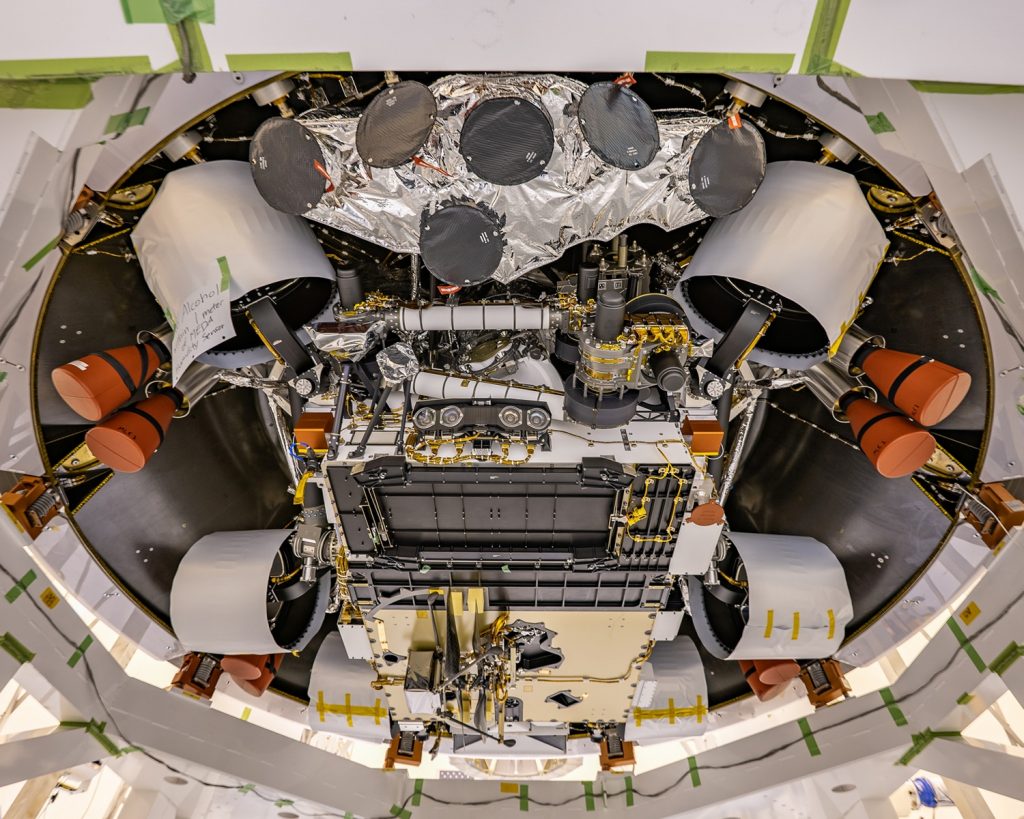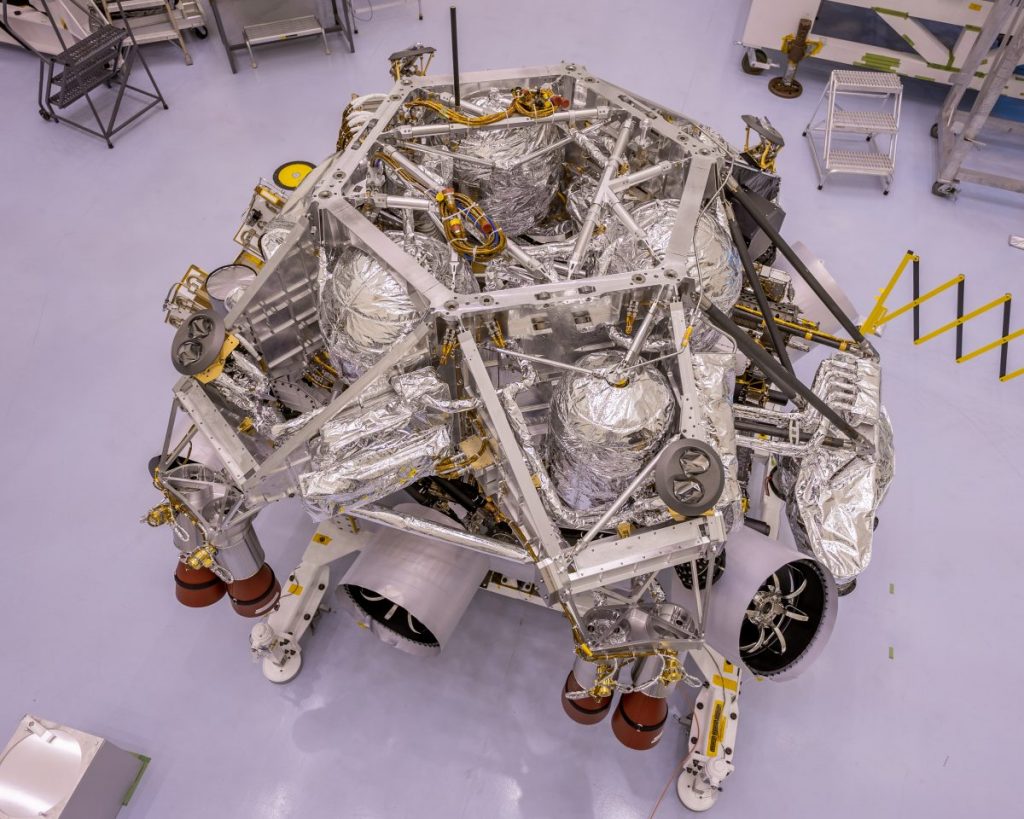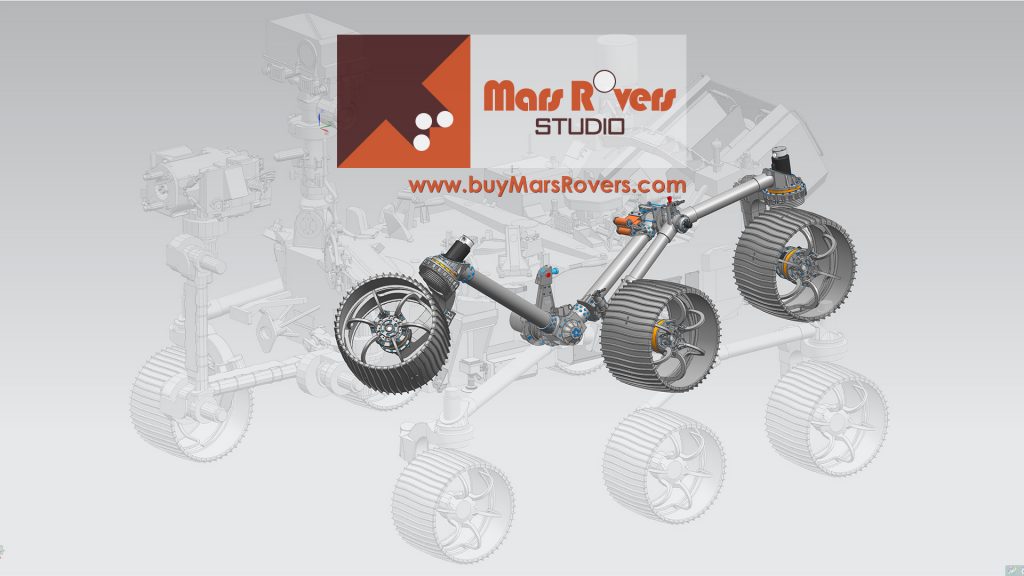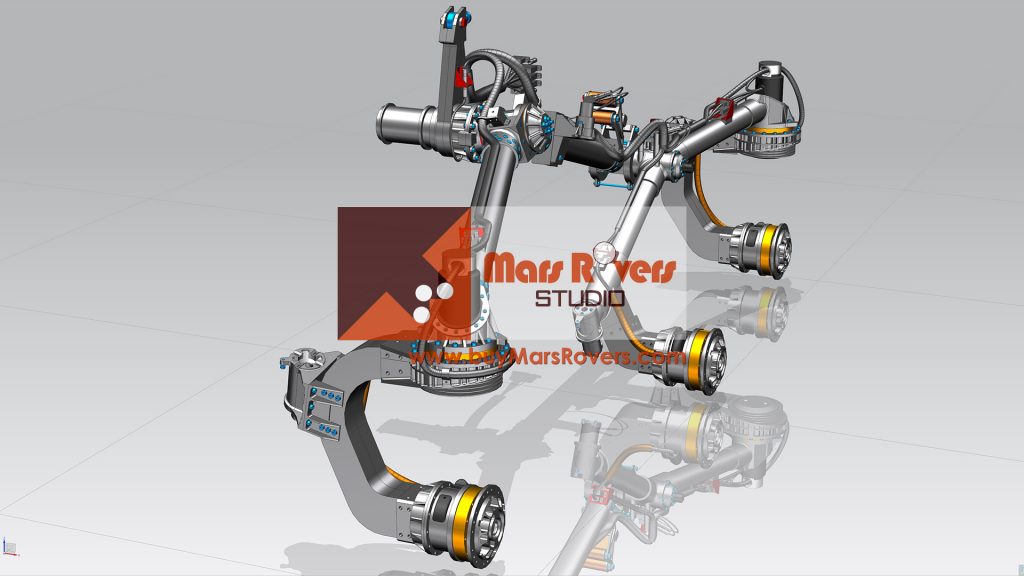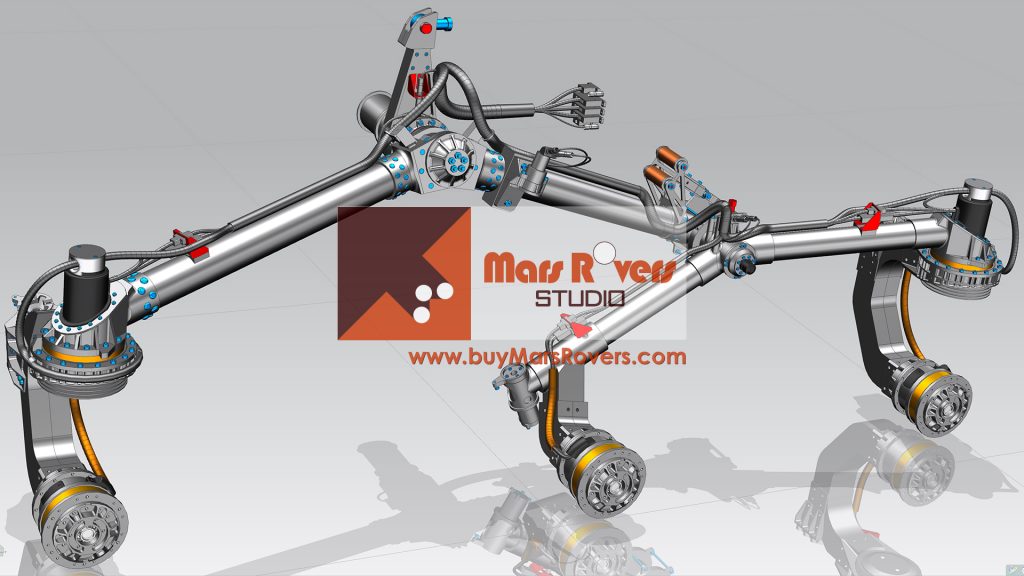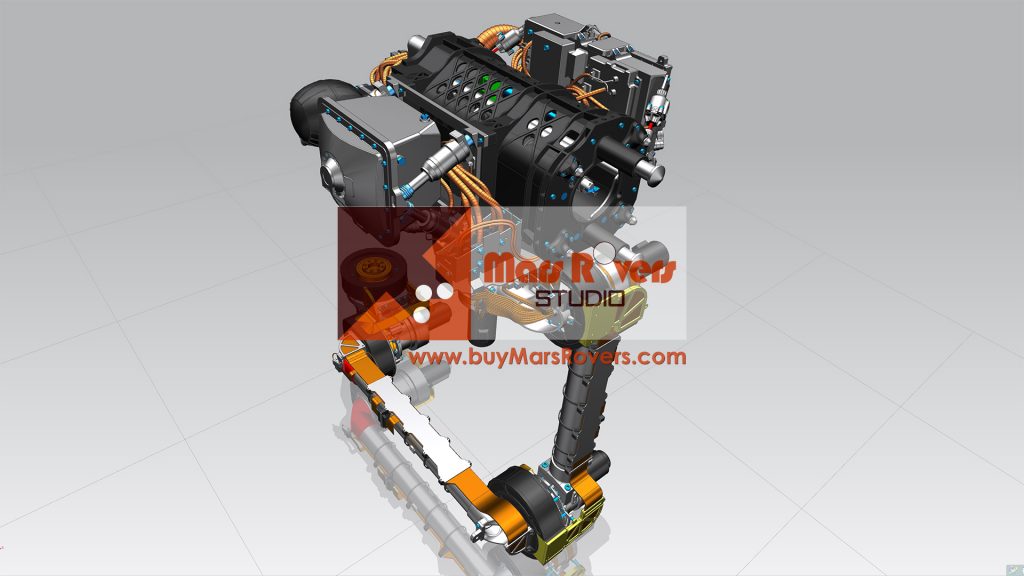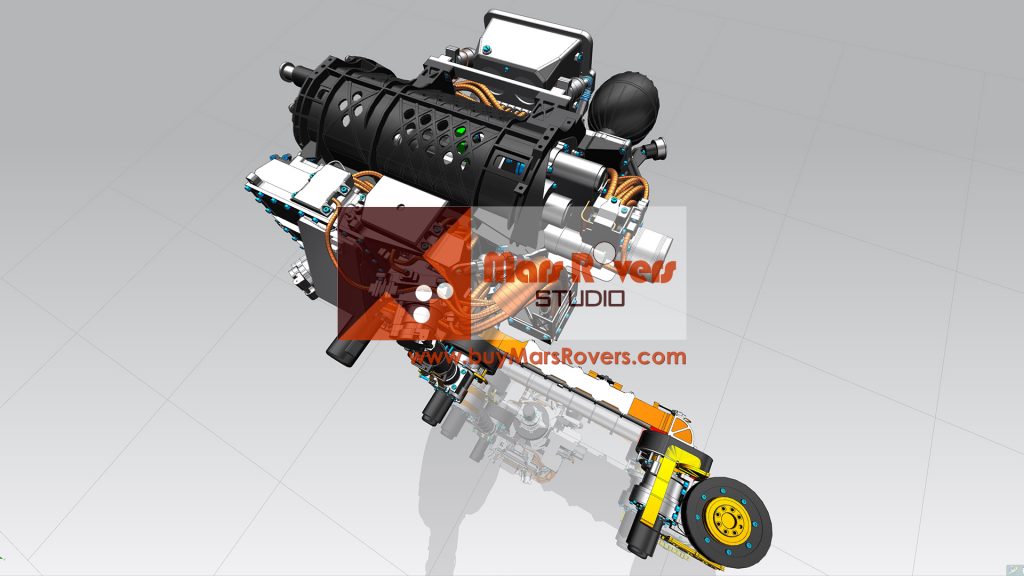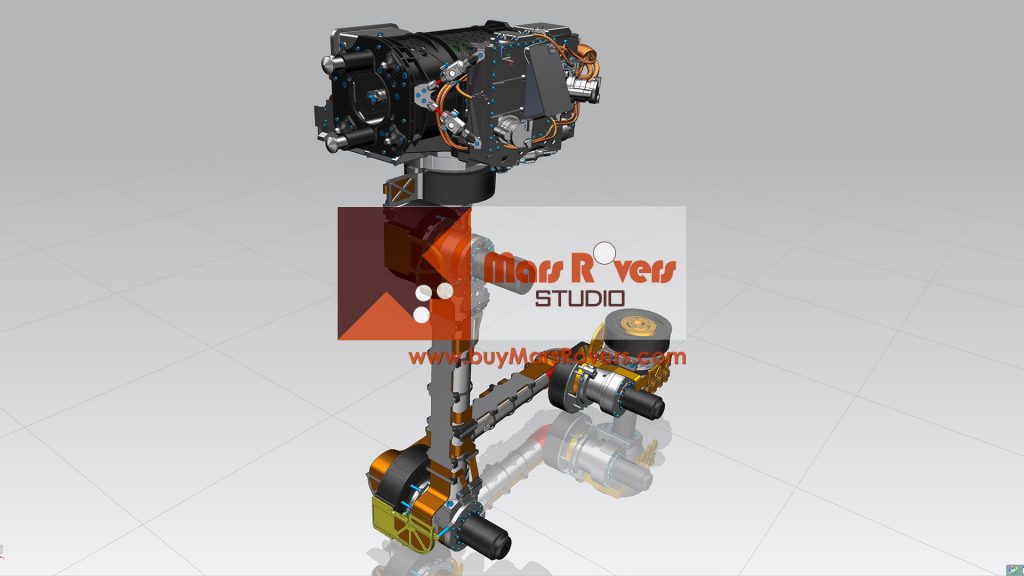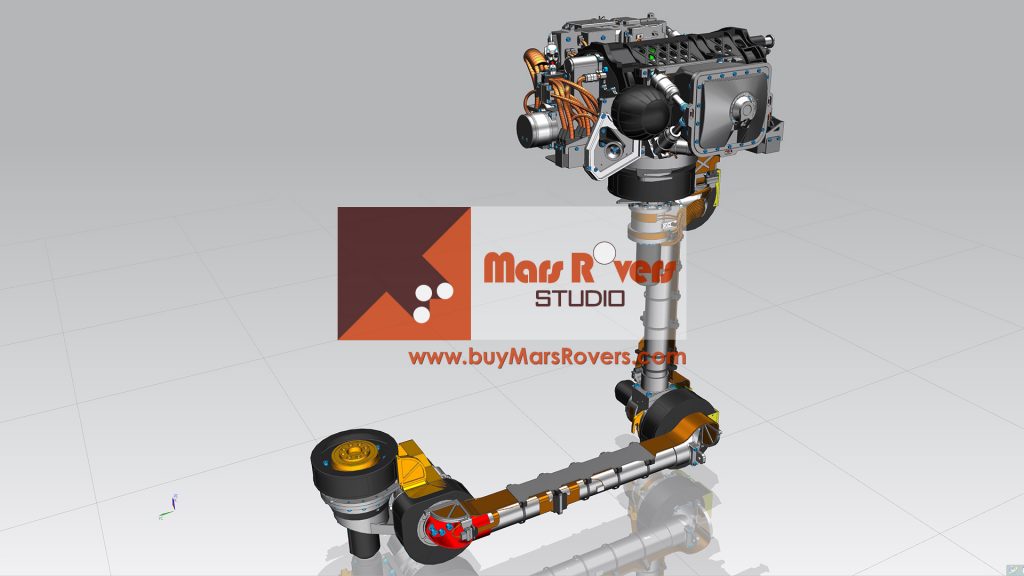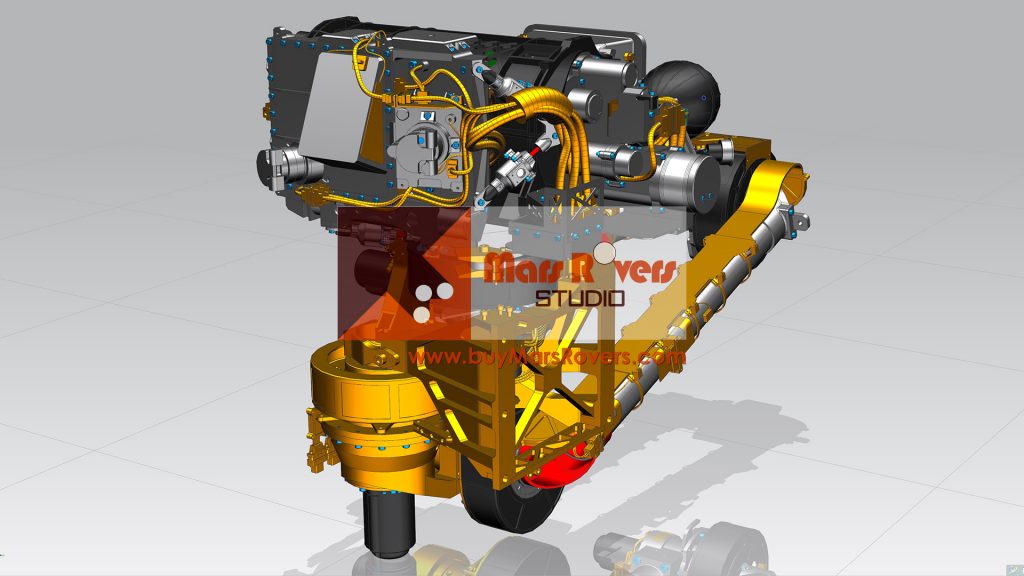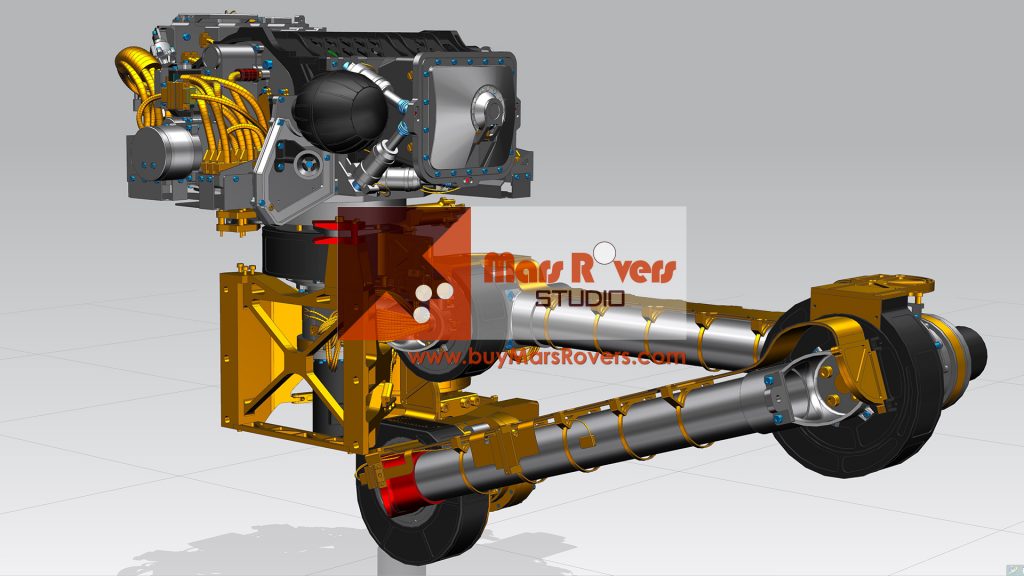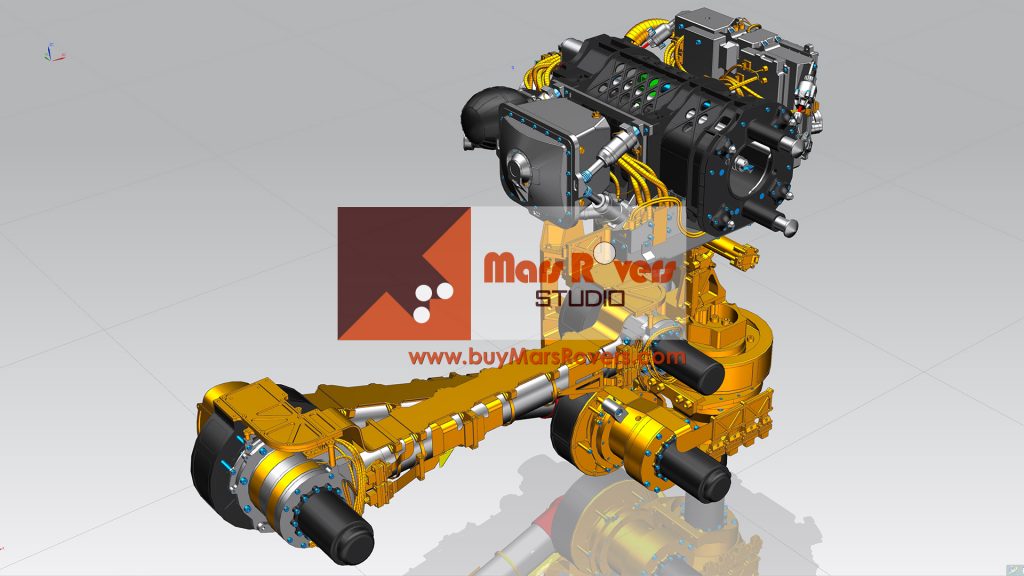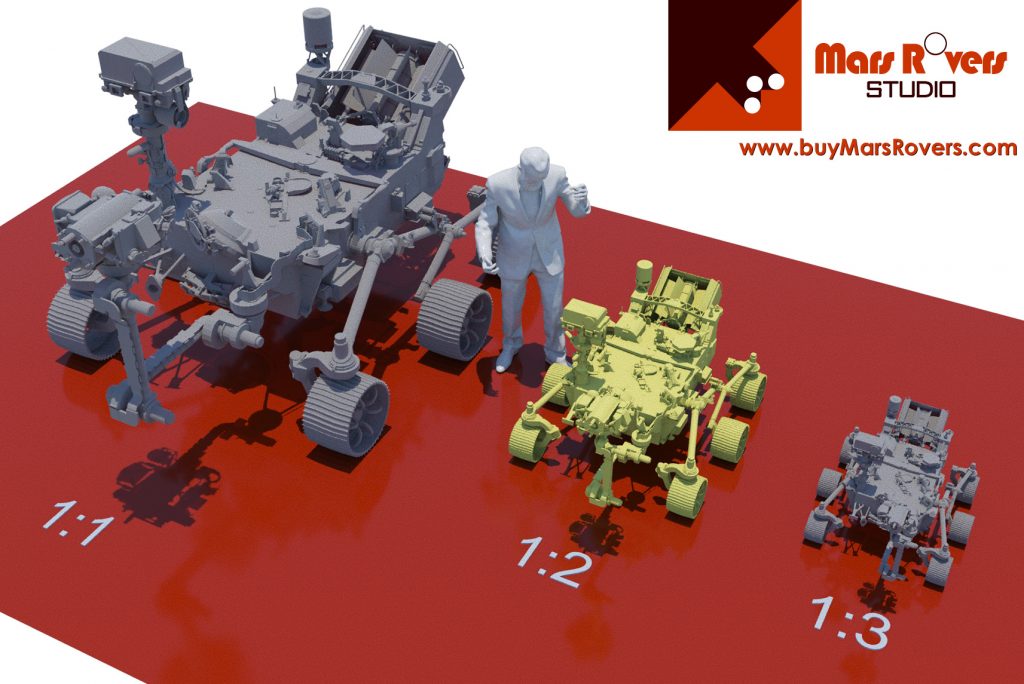The Mars 2020 Perseverance Rover’s PIXL’s sensor assembly is a white box connected to the turret of the Mars 2020 Perseverance Rover’s robotic arm by 6 legs that are grouped in three pairs. The sensor assembly consists of the instrument to fire and detect X-ray, to take photos, and to measure how the target is from the Mars 2020 Perseverance Rover. Inside of the Mars 2020 Perseverance Rover’s PIXL’s sensor assembly, there is a Micro-Context Camera or MCC, There are a ring of LEDs on the Mars 2020 Perseverance Rover’s PIXL’s sensor assembly, called the Flood Light Illuminators (FLI), which helps with illuminating the target area for the MCC at night. There is another device called structured light illuminators (SLI) which helps with the measuring by projecting arrays of laser dots onto the target. So the MCC only takes context photos, but also takes photos of the laser dot arrays from the SLI). Although the PIXL assembly of our 1:2 Perseverance Mars Rover replica does not have the X-ray, micro-context camera, or the measuring feature, we will replicate their appearance structure.
The Mars 2020 Perseverance Rover’s PIXL’s body unit electronics (BUE) has a weight of 3 kg or 6.6 lbs, and the base has a length of 1.41 m or 55 inches, and a width of 1m, or 39 inches. The Mars 2020 Perseverance Rover’s PIXL’s BUE is not located in the sensor assembly on the turret, but instead, the BUE is inside of the Mars 2020 Perseverance Rover’s body. The BUE is connected with the sensor assembly by a cable and connector combination which in total has a length of 1.91 meters. The Mars 2020 Perseverance Rover’s PIXL’s BUE is made of aluminum 6061 and inside of the BUE are the main electronic controls: the power board, the interface board, the control board, and the analog board. The Mars 2020 Perseverance Rover’s PIXL’s BUE is a sophisticated structure, but since it is inside of the rover’s body, you cannot really see it unless you open up the rover’s body. Therefore, we might replicate the BUE after the parts on our Perseverance Mars Rover Replica you can see are replicated, and again, our Perseverance Mars Rover Replica‘s PIXL’s BUE will have functions that the real Mars 2020 Perseverance Rover has, but only the appearance structure.
The Mars 2020 Perseverance Rover’s PIXL’s calibration target has two purposes. The first purpose is to calibrate the X-ray subsystem, and the second purpose is to help with the physical alignment of the X-ray beam – MCC and SLI. The dimension of the Mars 2020 Perseverance Rover’s PIXL’s calibration target is 39mm (1.53 inches) by 30mm (1.18 inches) by 8mm (0.31 inches) and has a weight of 10g or 0.35oz. The Mars 2020 Perseverance Rover’s PIXL’s calibration target has the following 6 features:
- A disk of PTFE (polytetrafluoroethylene) for making sure the stability of the X-ray source spectrum and X-ray detection.
- A USGS (United States Geological Survey) basaltic standard BHVO-2 in glass form. It was made by melting and rapidly quenching power BHVO-2, and this was happening in a platinum boat.
- A NIST-610 glass disk. NIST is short for the National Institute of Standards and Technology).
4. A mineral scapolite disk which was epoxied on The Mars 2020 Perseverance Rover’s PIXL’s calibration target by the PIXL team.
- A glass disk in the center of the Mars 2020 Perseverance Rover’s PIXL’s calibration target. It has a metal cross on top where one line is a chromium and the other line is nickel. It is for calibrating the location of the X-ray beam and the SLI laser beams.
- Black dots which are distributed randomly on the Mars 2020 Perseverance Rover’s PIXL’s calibration target plates, where the top plate is 5mm (0.2 inches) higher than the lower plate. The dots are for calibrating the Mars 2020 Perseverance Rover’s PIXL’s sensor head location.
Our 1:2 Perseverance Mars Rover replica will also replicate this calibration target but most likely not with the materials that the real Mars 2020 Perseverance Rover’s PIXL’s calibration target uses. We will utilize what we can get our hands on and definitely will replicate the appearance structure like the real one. But naturally, since our Perseverance Mars Rover replica‘s PIXL does not work like the real PIXL, it will not need to calibrate.
The Mars 2020 Perseverance Rover’s PIXL will collect a huge amount of information and the operating hours often will go up to 16 hours. Therefore, the Mars 2020 Perseverance Rover’s PIXL also has to work at night when the Mars 2020 Perseverance Rover is resting. Although our Mars Rover replica does not process any data or information, you can use whenever you like with the remote,
